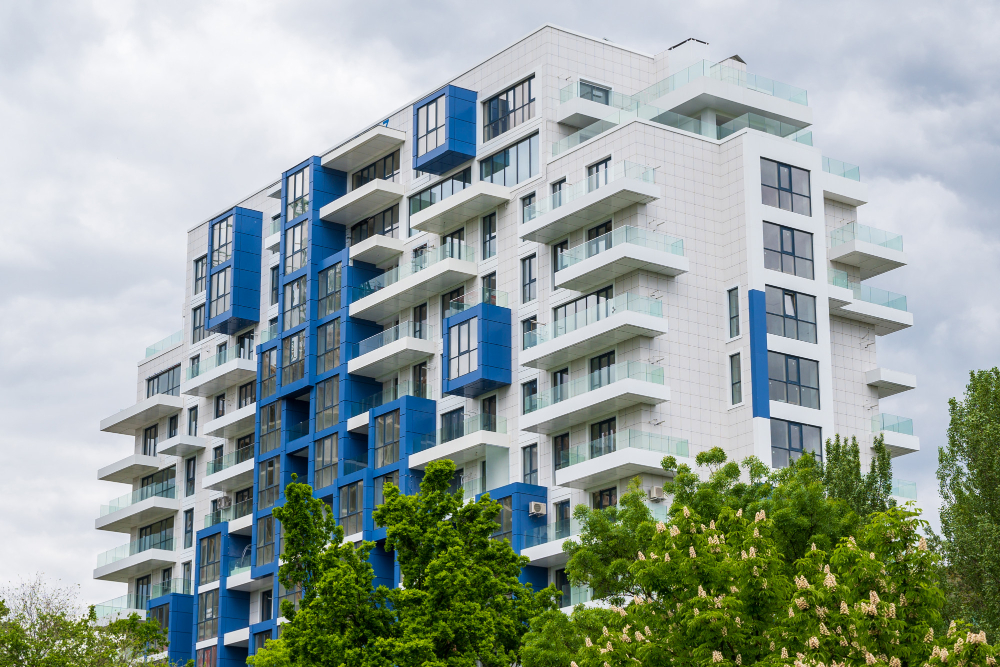Why Is Condominium Mortgage Different?

People who appreciate convenience frequently choose to buy a condominium. However, achieving that convenience comes with a few more obstacles when qualifying for a condo mortgage. Condominium mortgage standards are more severe than regular house loan requirements, and mortgage rates are often higher. Furthermore, there are fees associated with a condo mortgage that you would not see with a traditional house loan. Not only that, but in addition to qualifying for a mortgage, the residents’ club where you’re buying a condo must also pass muster.
This does not imply that the extra steps in acquiring a mortgage for a condominium will be a considerable impediment to securing the loan; as much as you’re equipped for them and know what to anticipate, you should be OK. Here are the most important things to know when receiving a condo mortgage.
Possible high rates
Condominium mortgage rates are often higher than what the same borrower might pay if acquiring a single-family house on equal terms. This is because condo mortgages are deemed riskier loans than single-family home mortgages. For example, a conventional mortgage guaranteed by Fannie Mae will often have a rate of one-eighth to one-quarter of a percentage point (0.1255-0.250 percentage points) more than a single-family house. This is due to Fannie Mae’s charging banks an up-front fee of 0.75 percent of a loan amount on all condo mortgages with less than a 25% down payment. As a result, lenders typically compensate for this by raising the mortgage rate.
You may avoid the greater rate by paying the 0.75 percent beforehand or putting down 25% or more of the purchase price. However, a deposit of that size is out of grasp for many condo purchasers, especially first-time homebuyers. With an FHA loan, you may put down as little as 3.5 percent for a condo and yet pay the same interest rate as if you put down more. On the other hand, the FHA imposes an upfront mortgage insurance cost of 1.75 percent of the loan amount, whereas Fannie Mae does not.
Some lenders may charge higher interest rates for condo mortgages issued in specific areas, including Florida and Nevada. While these hikes are usually minor, they might be nearly half a percent greater than what you’d pay for an identical loan in another state. These modifications differ from lender to loan, so it is worthwhile to shop around.
We May need to make a larger down-payment
As previously stated, you must pay at least 25% down on a condo to qualify for the best Fannie Mae loan rates; single-family home purchasers can be eligible for the cheapest deals by putting down only 20% or less. Furthermore, specific lenders may ask for a minimum of 20% down payment on a condo purchase. This is partially due to geography; condominiums in Florida and Nevada, for instance, need a more significant down payment than in other states. However, in other places, the down payment for a condo can be as little as 5% for people with excellent credit.
As previously stated, FHA loans allow down payments as low as 3.5 percent for condominiums. However, if you purchase a condo in a new building that does not have a 10-year guarantee, you will be asked to put down 10%.
Don’t neglect the association fees.
Apartment buildings are often less expensive than single-family houses (due in part to their smaller size). Therefore your monthly mortgage on a condo will be cheaper than on a home. However, when calculating your mortgage payment for a condo, don’t forget to include it in the association fees. All condominiums have homeowners’ organizations, which maintain and repair the building exteriors, grounds, and frequently shared facilities. These are supported by monthly dues paid by condo owners and mortgage payments.
Homeowner association membership fees can vary significantly based on the services and overall property maintenance cost. Generally, you’ll seldom find them for less than $100 per month, with $500 more common for excellent houses. While this may be an additional cost to your loan, your homeowners’ association payments will save you money in other ways. For example, because the association is in charge of grounds maintenance and exterior repairs, you won’t have to worry about significant outlays for things like a new roof, siding replacement, or purchasing and maintaining a lawnmower.
Be mindful of purchasing a condominium in a building with exceptionally cheap association fees. Likely, they’re not charging enough to appropriately keep the property, which might depreciate the value of your particular unit over time. Also, remember that association fees are not set in stone; they may be increased, often drastically, if your homeowners’ association deems it essential.
Will the property qualify?
With such a condominium, you share ownership of your home with the other members of the community. The homeowners’ association is responsible for ensuring that the entire development remains a sustainable entity. Before approving a mortgage, a lender will want to ensure that you and the product are financially secure. Before they accept a mortgage to acquire a unit in a condominium building, Fannie Mae, Freddie Mac, and the FHA have rules that condominium projects and their homeowners’ associations should follow. The critical conditions of all three are that at least half of the units be owner-occupied and that no single investor holds more than 10% of the units (Rules may differ for newly developed properties).
Fannie and Freddie also mandate homeowners’ associations to set aside at least 10% of their yearly earnings for long-term requirements. The FHA has a higher criterion, requiring a home to have undergone a financial examination within the previous 12 months. Many complexes do not want to go through this process every year, limiting the amount of FHA-approved condominiums on the market. If a development does not meet these “agency” standards, one can still obtain a condo mortgage by working with a “portfolio” lender. These lenders do not sell their home loans to Fannie Mae, the FHA, or another agency but instead hold them in their stock holdings or sell them to investors directly.
That implies they are not required to follow Fannie/Freddie/FHA (Tripple F) criteria but can create their own. These mortgages often have fewer limitations but carry much higher interest rates – frequently up to three total basis points more than the best agency rates. Deposit requirements of 20-30% or more are also prevalent. These factors might make obtaining a mortgage for a condominium more difficult than getting a loan for a single-family house. However, as you’re prepared for them, they shouldn’t be serious roadblocks.



